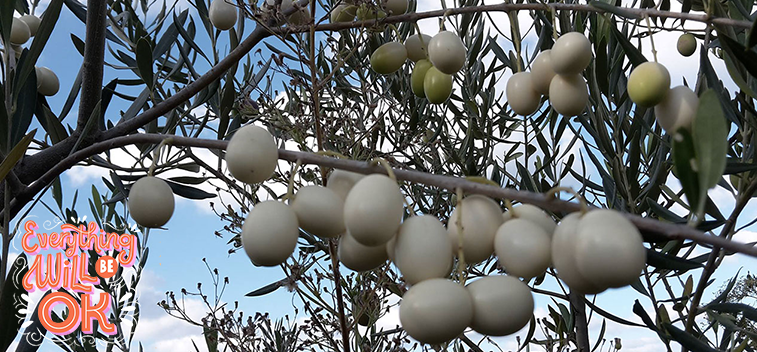
The oil obtained from the fruits of the wild olive trees of the Medas Islands - an archipelago located in the Mediterranean Sea, off the coast of the Girona province area - has an excellent quality, with unique characteristics from a sensory and physical point of view. -chemical and nutritional stability. This is one of the conclusions of the article published openly in the journal Antioxidantes , based on a study that reveals that the quality parameters of this oil are within the values recommended by the International Olive Council (IOC).
It is a first approach to the characterization of albino wild olive trees in Catalonia, and explores the resources of the natural habitat of the Medes Islands as a way of enriching the genetic diversity of olive trees and local heritage.
This work has been directed by Professor Rosa M. Lamuela, from the Faculty of Pharmacy and Food Sciences of the University of Barcelona (UB) and the Center for Biomedical Research in Network of Physiopathology of Obesity and Nutrition (CIBERobn). On behalf of IRTA, Antonia Ninot, researcher of the Fruit Growing program specialized in olive growing, has participated. The work is also signed by experts from the Institute of Nanoscience and Nanotechnology of the UB (IN2UB), the Institute of Research in Nutrition and Food Safety of the UB (INSA-UB), and the Andalusian Agricultural and Fisheries Research and Training Institute, (Ifapa). Finally, the Scientific and Technological Centers of the UB (CCiTUB) have also participated, among other research support infrastructures.
As reported by IRTA, the wild olive tree or "wild olive tree" (Olea europaea L. var sylvestris) is the ancestor of the cultivated olive tree (Olea europaea L. subsp. Europaea), the plant cultivated since ancient times to obtain oil. Currently, the commercial use of the fruit of wild olive trees is quite a minority, beyond the specific production of high-quality organic oils in the Iberian Peninsula.
This despite the fact that the organoleptic properties of olive oil from wild olive trees are similar to those of commercial olive varieties. "This is due to the fact that both oils have similar concentrations in oleocanthal and oleacein, two phenolic compounds responsible for perceptions such as itching and bitterness," have detailed the researchers Antonia Ninot and Anallely López-Yerena (INSA-UB).
One of the main reasons was that, until now, there was not much information available on the phenolic profile of wild albino olives. "Wild olive fruits are characterized by having low oil content. However, they present unique characteristics such as albino fruits with a high content of phenolic compounds that could exert an effect within the parameters required by the European Union to have a health claim (protection of low-density lipoprotein or LDL particles against oxidation)", has indicated professor Rosa M. Lamuela.
In the Medes Islands, wild olive trees have adapted to grow under conditions marked by the Mediterranean climate and the geological environment (water stress, salinity, etc.). "Specifically, the phenolic profile of the oil obtained is higher than the only one described so far in a genotype of wild olive trees in Algeria. For this reason, we are probably facing some genotypes that could be used for food purposes and also in programs to improve the traditional olive tree", the researcher added.
Expand plant diversity and protect natural heritage
The IRTA has underlined that wild olive trees represent a potential example of resilience and adaptation to adverse agronomic conditions. Today, wild olive groves can still be found in southern Spain (Andalusia), in addition to genuine wild forms scattered in areas of the Valencian Community and Catalonia.
"Protected areas, such as the Medes Islands, can help maintain the biodiversity of species and foods such as virgin olive oil. In the future, new studies will have to be promoted to improve the conservation of wild olive trees, the selection of genotypes with other sensory characteristics better adapted to certain environmental conditions, and the use of genetic material for reproduction purposes. In addition, this knowledge will help us to better understand the history of the plant domestication of the olive tree for cultivation", the researchers concluded Anna Vallverdú-Queralt and Julián Lozano-Castellón (UB-INSA-CIBERobn).
The new work is part of a program on cultivated biodiversity aimed at preventing the alarming loss of genetic diversity and promoting the use of local crops. Within this framework, ongoing activities are aimed at prospecting and collecting wild olive populations in Spain, in order to evaluate their genetic variability and study their potential application in future olive tree improvement programs.
Source: Mercacei